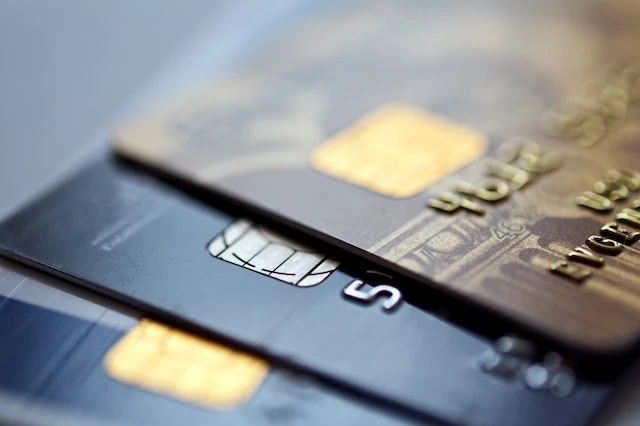Money isn’t always easy to come by. It’s important for kids to learn how money works and what it can do for them, so they can grow up with a solid understanding of the world around them.
Teaching kids about money management is an essential life skill that will help shape their future—one where financial security is attainable through hard work and determination.
If you don’t teach your kids how to manage money, they might learn bad money habits from observing other people’s poor behaviors.
This article aims to help you provide the head start on money lessons you want to impart to your children. Maybe they’re lessons you wished you had learned growing up, or maybe you learned them later than you would have liked.
Either way, we hope you can use them to teach your kids about money at age-appropriate times.
This article outlines some tips on teaching kids about money management, including budgeting, spending, saving and investing.
Table of Contents
How Do You Explain Money to a Child?
The best things in life might be free, but most things cost money. Buying toys, video games, food, Starbucks—really almost anything—costs money.
Being aware of how money gets spent, and how much gets spent, will help kids make wiser decisions.
Hundreds of years ago, our ancestors may have had an easier time explaining money, or at least its foundational concept: the notion that certain products and services inherently carried value—often tangible and something of need.
Before money became a way of paying for things, our predecessors exchanged goods they possessed or services they could perform for those they might need in return.
For example, you could provide a thatcher with livestock and expect your roofing repairs to be handled in return. If you needed your home to stay lit, you could deliver a basket of eggs to a candlemaker.
Today, of course, we rarely (if ever) barter. We instead use currency in its various forms: paper money, credit cards, transfers from bank accounts.
Grown-ups know how much real money is worth simply from rote memorization. In fact, you probably have a hard time remembering what it was like to not know anything about money.
But it’s not inherent. Kids have to learn about it.
When you teach your child about money, you’ll need to include several building blocks, such as how to value a dollar, what things cost and how to earn money.
But the first step is teaching them the definition of money.
What is Money?
What does it mean when someone says, “I make a lot of money” or “I have a lot of money”?
Money is an accepted form of payment for goods and services—one in which both sides generally agree on how much that form of payment is worth.
Currency is a particular system of money. The U.S. dollar is one system. The euro is another. Even cryptocurrency is a currency system.
Within these systems, people use paper (coin) money, bank accounts, credit cards and more. These various tools allow us to exchange currencies for goods and services.
What Should I Teach Kids About Money?
Broadly speaking, you should teach your kids three main skills when it comes to money:
- How to use money and make change
- How to identify money and the value it represents (the latter will be learned more with time and experience)
- How to grow their money
These concepts might seem basic to adults, but kids won’t learn about them quickly without someone to teach them. Schools rarely teach these concepts, except maybe as examples to illustrate lessons in math classes.
This article will cover a number of money lessons with these basic principles in mind.
When Should I Teach Kids About Money?
You can teach your kids about money as soon as they learn not to put it in their mouth. (Something my wife and I have avoided so far with our 2-year-old, but only because we don’t carry physical money.)
Here are several money milestones you can expect your children to understand by age:
- Toddlers to school age (2-5): Counting from one to a hundred lays the foundation for understanding money, as does an ability to sort objects by shape and color, being independent, and imitating the actions of adults.
- Middle childhood (6-8): Middle childhood money concepts rely on toddlers’ ability to start counting money, setting them up to learn the cost of money. Your child should already count coins and bills by the end of third grade when they begin learning about multiplication and division in school (so, roughly 7 to 8 years old). Further, this age group starts to think about the future, so you can help them begin to understand how saving and opportunity cost work.
- Tweens (9-12): Tweens become more independent of the family while facing academic challenges at school and see the points of view of others more clearly. This sets the stage for wanting to receive (or earn) an allowance to do things they want with their friends, but also understanding what to and not to do with money through learning restraint. Further, with their newfound money, they should develop a sense of responsibility, not only for themselves but also for their place in the world. That means considering giving back or volunteering their time.
- Teens (13-18): At this age, teens begin to experience several changes that transition them from childhood to adulthood. Chief among them financially are developing a stronger sense of self and developing goals for themselves. To enable this transformation, you’ll want to equip them with a bank account and possibly a job to fill it with earnings. From there, you’ll want to drive home the importance of budgeting and investing, both of which can align how we use money with our goals. Finally, you can’t send them off into the world without a discussion around credit cards and debt—powerful tools when used wisely, but quicksand when used without intention.
Among the activities that will help your children learn are playing shop, adding money to a piggy bank, doing chores and earning an allowance, or any other fun activities that get their brains working and engages them.
That way, they’re more likely to retain the knowledge and see dealing with money as something to be enjoyed—not a task you suffer through.
Eventually, they’ll graduate to other responsibilities, such as opening up a bank account for saving money or having a debit cards for kids.
As you read on, we’ll tackle specific lessons by age and the various activities you’ll do with your children to drive the lessons home.
Related:
When Can I Teach Kids About Money?
Learning about money—how to budget it, save it, spend it and invest it—starts early. You can teach your kids about money as soon as they’re able to walk and reach up to grab something off the coffee table or counter.
They’ll quickly need help understanding money through useful lessons, good money habits and seeing how you go about doing these same tasks.
Thankfully, you have numerous ways to teach your kids about all these important money milestones and personal finance topics.
Start their financial education with the concepts below and use them as ways to teach financial literacy skills to your toddlers, young children, tweens and teens.
Before Formal Schooling (Toddlers to School Age)
1. Teach Your Kids Their Money ABCs
At the same time your kids learn to read and recite their ABCs, they should also begin learning their Money ABCs—though these are more like their Money 123s in that they need to learn how to count, make change and handle money.
Here in the U.S., understanding the concept of money and how everything is based upon one unit of currency, the dollar, is important for children.
That means you’ll be teaching them about bills (sheets of paper) and coins (discs of metal).
Bills in circulation today include the $1, $2, $5, $10, $20, $50 and $100. (In the past, the U.S. economy had bigger bills in circulation, but these have ended with no future return in sight.)
Coins in circulation today include the penny (1¢), nickel (5¢), dime (10¢), quarter (25¢), half-dollar (50¢) and $1 coin (100¢).
Start teaching your child by using the dollar as the main unit. Coins act as fractions of that unit, while bills are multiples of it. A hundred pennies are worth as much as a $1 bill; so are 20 nickels. Four quarters, two half-dollars and a $1 coin each add up to the same $1.
Next, you want to teach your children to understand how other coins and bills relate to one another. Ten pennies will buy you as much as one dime; five nickels is as much as one quarter; and four quarters has the same worth as a single $1 bill.
As a fun exercise, ask your child to think of how many combinations of coins might equal 50¢. (The answer: 37 combinations, one of which is simply one half-dollar.). Consider repeating this game with other amounts, such as a quarter (14 combinations) or even a dollar (293!).
Preschoolers & Kindergarteners (Middle Childhood)
1. Show Your Children the Cost of Money
Once your children understand how coins and bills interact with one another, it’s time to show them what those coins and bills can buy.
Showing them is the key. Simply saying what their money can buy won’t convey as much meaning. Actions speak louder than words.
So, instead of telling your child “A pack of gum costs $1,” give them a dollar, then walk with them to the store to hand the money directly to the cashier. Let your kids handle the cash and change they receive. Do this time and again and they’ll get the picture.
Once it’s clear they understand the concept, it might be time to upgrade to a prepaid debit card for kids and teens; after all, handling physical cash and coins has become less common, especially since how we use money changed during the COVID-19 pandemic.
2. Teach Your Children to Start Saving Money Now
Building good saving habits only gets harder as you age.
For instance, it’s difficult to start becoming a saver when you get your first job out of college, and your wages must suddenly go not just to hanging out with your friends and going out on dates, but also rent, utilities and everyday food.
But when you’re young, you typically have living expenses covered, which allows you to focus your savings on specific goals you have with your money.
Therefore, help your kids begin to save as early as possible, and again, make it visual. That means having a piggy bank or some other jar or container to hold their money.
To amp up the impact, consider a clear or translucent container so kids can see how much money they’ve managed to save. Visuals are more effective than thinking about progress in abstraction.
Once a year, you might consider cashing in and bringing all this change to your bank to deposit it into a savings account for kids.
Or, consider letting it begin compounding in one of several types of investment accounts for kids instead of letting the money collect dust.
3. Explain Opportunity Cost
Opportunity cost is the cost of making a choice, though it can also be seen as the cost of not making a particular choice.
If you opt to invest in one thing in lieu of another, opportunity cost is the value of the potential gains—be it time, money or something else—you missed out on by not selecting the alternative.
It’s important for kids to understand opportunity cost as early in life as possible.
As they grow, opportunity cost will come up quite often—what they gain and what they miss out on by joining certain extracurricular activities such as music lessons or sports, or by taking a part-time job.
When children understand the cost of their decisions, they’re better prepared to make the best investments with their time or money.
4. Reinforce By Doing and Being an Example
As you think about ways to teach your kids important money skills for developing their financial education and financial literacy, remember this: Money habits form early, even as young as 7 years old.
So be mindful: Your kids are watching your decisions on how to manage money, and they will learn from you.
Let’s say you want to bestow good money habits upon your children. When you go to the grocery store, have a weekly shopping specials ad in your hand.
Don’t eat out often, and when you do, use coupons. Even consider setting and regularly reviewing progress toward financial goals in front of your children.
Similarly, if you make excessive purchases with a credit card regularly, visit restaurants daily, or pay little attention to your spending habits, they’ll notice—and possibly adopt similar bad habits.
Therefore, you’ll want to set an example they can follow as they get older and develop money habits of their own.
You might consider exposing your children to certain advanced money concepts early—for instance, budgeting your money, saving for retirement, managing debt and minding personal finance decisions. But you’ll need to be the ultimate judge of what your child is ready for and when.
Elementary and Middle School Students (Tweens)
1. Pay an Allowance (Whether Earned or Not)
Parents sometimes argue about whether kids should earn an allowance or just receive one.
“Instead of giving them passive income,” some say, “I want to make them earn it by doing chores around the house.”
These parents reason that through earning their pocket money, chores and allowance can teach their children the value of hard work and that earning money equates to work performed.
You can go a step further than that. Let’s say you pay your child for a task completed.
Consider paying extra money if your child discovers a more efficient or effective way of accomplishing that task, or they discover an innovative solution to some other problem. This demonstrates that higher-order thinking and creativity earn rewards, too.
This type of thinking creates the most desirable employees in today’s market and rewards these high income skills accordingly.
Others believe simply giving an allowance can provide their children experience with handling money and learning how to live by a budget—both of which they see as just as important as instilling a sense of hard work and accomplishment.
Further, awarding them with an allowance can also provide useful lessons on managing money, and prioritizing how they spend it.
No matter your reasoning for paying an allowance, you have several useful tools available to manage such a system and fill their piggy bank.
One such tool you can use to set up and automatically transfer allowance is with Greenlight, a prepaid debit card and money management system for kids that comes equipped with parental controls and oversight.
Parents can transfer money onto the child’s Greenlight debit card, paying them earnings for chores they perform around the house or for the allowance they receive.
- Greenlight is a financial solution for kids that allows them to spend with a debit card, earn money on savings, and even invest their money.
- Greenlight offers flexible parental controls for each child and real-time notifications of each transaction. And it's the only debit card that lets you choose the exact stores where kids can spend on the card.
- Parents can use this app to teach kids how to invest with a brokerage account through Greenlight Max and Greenlight Infinity plans.
- Families can earn 2% (Core), 3% (Max) or 5% (Infinity) per annum on their average daily savings balance of up to $5,000 per family. Also, Max and Infinity families can earn 1% cash back on their monthly expenditures.
- Unlike many apps that simply provide features and controls, Greenlight is also designed to spark discussions with children about spending, investing, and more, fostering a better educational experience.
- Best-in-class parental controls (can prohibit specific stores)
- Can add brokerage account to invest in stocks
- Intuitive Parent + Kid apps
- Competitive cash back & interest rates
- Parent-Paid Interest
- High price points
- No cash reload options
- No parent / child lending
Related:
2. Teach the Power of Restraint
Impulse buys ruin budgets because they rarely ever get factored into the expected monthly spending categories. (Some people account for this by factoring in a Mad Money-type category into their budget allocations.)
However, because kids haven’t yet had enough time to develop a close relationship with delayed gratification (nor a fully developed prefrontal cortex), impulsive actions frequently take over.
You can thwart this by making them have skin in the game. This might mean giving up something else they want (or need) as well as having them pay for it, at least in part, with their own allowance.
If they earn an allowance, this will make them connect the accomplishment of earning money with the pain of paying—or of being smart with money and making sure the purchase fits into a budget.
And even if they simply receive an allowance, skin in the game will make them understand that when they commit their money to something, they forgo the chance to spend it elsewhere.
Also, take a lesson from psychologists who recommend writing an angry letter and sleeping on it for at least 24 hours before sending it, which keeps people from immediately acting on every urge.
Establish a similar “cooling period” for when your child wants to make a purchase over a certain price point. You’ll likely find that many of these would-be impulse buys are forgotten in only a day’s time (or less!).
3. Stress Giving Back or Gifting to Another
An important element to keep in mind for your children as they come of age is to teach kids about giving back or gifting to others. This can include financial gifts to loved ones.
Kids can pick a charity, organization or even someone they know who needs a little help from a friend or neighbor. Eventually, they’ll begin to develop a sense of fulfillment because giving doesn’t just help the recipient, but the giver as well.
This has become a core tenet behind several debit cards for kids, such as Greenlight, Copper and GoHenry.
These and other cards allow children to receive money through an allowance, then have it automatically budgeted in part toward charities including Doctors Without Borders, American Red Cross, the Nature Conservancy and more.
These actions will instill a sense of giving back as they earn money as a means to help others. And speaking more broadly, if enough people prioritize giving back, the world might just be a better place for your kids to grow up in and raise their own families one day.
Related: How to Gift Stock to Children & Loved Ones [Tips from a Tax Pro]
High Schoolers (Teenagers)
1. Open a Bank Account (with a Debit Card)
Younger generations have grown up with a cell phone in hand starting from middle school onward (if not earlier). They’ve developed a strong sense of attachment to their mobile phones, and with it, a digital-first lifestyle.
That means eschewing cash for more digital forms of payment—however, while the likes of PayPal and Venmo might make more sense down the road, the best place to start is by helping your child open their own bank account.
There are numerous banking apps for teens available to assist with this action.
Apps such as Greenlight Card or GoHenry give you control over their spending, provide you real-time notifications of purchases they make and even allow you to block specific merchants (online and off) from using their debit card.
Plus, with Greenlight, they can even start investing in kid-friendly stocks through the app’s investing service.
These all-in-one financial apps start with small balances now but might help them manage their money when they leave home and have paychecks of their own!
Parents can help kids open these bank accounts. This can then serve as a pathway toward other important financial tools like kids’ debit cards or through parents’ cards as an authorized user.
Related: Opening a Child Bank Account with Debit Card
2. Help Them Figure Out How to Make Money
If your teenage child finds him or herself bored often after handling their course load and extracurriculars, help them to get a job.
If your child has proven they can handle sports, arts or other after-school obligations while covering their bases academically, they might consider earning some extra money with a small part-time job.
Not only can having a job help your child put some more funds in their newly opened teen checking account and debit card, but it has other perks: It teaches them responsibility, it makes the time go faster, and it can even motivate them to keep their grades up (so you’ll let them retain their job).
The money that comes from a job is a great opportunity to teach your child how to budget their money properly, save for college and invest for the long-term. But priority one is school—if they’re unable to keep up their grades, it’s best to forsake the job.
Related: Best Debit Cards for Teens
3. Budget, Budget, Budget
The moment your child starts to receive an allowance is the perfect time to start talking about budgets. This doesn’t need to be some complicated, multi-tabbed Excel spreadsheet.
Use a simple tool to help them with budgeting, managing their money and investing it. They can see where their money goes, giving them insight into what they spend on and whether their limited budget aligns with their priorities.
You don’t need to preach intense frugality or going without. But showing how budgeting can teach balance and aligning your money with your goals and desires is invaluable when scaled across a lifetime.
Since your teen likely remains glued to their mobile device, get them active on a great money app for teens like Greenlight.
You can start teaching your teen the basics of budgeting at any time, but now is better than never. The earlier a child learns effective money-handling strategies, the greater success they will have in life.
4. Teach Them the Virtues of Investing
OK. Your teenager might roll your eyes if you start a conversation, “Would you like to learn about investing?”
But if you learn the proper delivery when introducing investing, you’d be surprised just how excited teens can be when it comes to investing.
According to a survey from Wells Fargo on social media’s impact on teenage interest in investing, 75% of teens surveyed said they are ready to learn about investing, with nearly nine in 10 parents believing their teenage children are ready for it. This enthusiasm to learn about investing
might pay off in the long run, allowing for more time to accumulate and grow their savings.
Show them the magic of compounding: that their money can generate returns over time, and that those returns can generate even more returns! If you put $100 to work, and it earns 5% in a year, you’ll have $105. But if you earn 5% again the next year, you wouldn’t earn just $5 from the original $100 – that $5 in earnings would generate another 5%, or 25 cents, amounting to an additional $5.25 return, or a total balance of $110.25.
As you can see, the sooner your teens start investing, the better. Explaining to them how compound interest works is an excellent way to demonstrate how investing grows your money over time.
Teaching your child about money management and investing at an early age will help them see the benefits and pitfalls as they grow into their adult life. Consider investing with an app like Greenlight.
You can pair this with an investing book for teens to teach them how compounding returns work.
Related: Best Bar Mitzvah Gift Ideas [Financial Gift Ideas That Last]
5. Beware Credit Cards (and Debt!)
When your kid becomes an adult, you can expect your mailbox to get stuffed with credit card sign-up offers. They’re legally allowed to hold a credit card at this point (even if they have no credit), making them the rulers of their own fate.
You’ll only receive more offers for kids who are college-bound and in need of a line of credit to cover expenses away from home: things like gas, food, groceries, going out with friends, textbooks, incidentals and more.
Take this opportunity to head off these enticing offers by first having a discussion about why a kid’s credit card might be a good idea, but letting debt pile up on it is a bad idea.
A line of credit can allow people to get things right now, even if they can’t afford them right now—because they can just repay the cost down the line.
What people tend not to think about are the considerable interest rates that compound against you. And that’s because not all debt is created equal.
Some debt, like mortgages or student loans, can help you achieve greater outcomes in life. You can lock in housing costs while building equity in a home, or you can finance an education to position you for a more rewarding career.
Credit card debt, on the other hand, almost always falls in the “bad debt” column, especially when not paid off rapidly. It’s an easy way to slip into high-cost debt that can quickly spiral out of control.
It might also serve you well to think about starting with a low credit limit, preventing the mistake of taking on too much costly debt at the start before knowing how to handle a credit card.
Related: Best Credit Cards for Teens
Learning About Money Is a Commitment
These are some of the most important lessons that you, as a parent, should teach your kids about money.
As you can see, some discussions, actions and exercises will come easily—but others will not. Some will take considerable commitment. Some will require compromise. And in most cases, showing and/or doing will trump merely telling.
Just remember to approach every subject on your child’s level, and be patient. Not every child will understand these concepts on the first try. That’s OK. Persistence and patience will pay off.




















